As soon as spring arrives, we are looking forward to fresh and colorful ranunculus. Usually, the florist offers them from February until early summer. You can buy fresh ranunculus at the same time as tulips and anemones. That’s why the ranunculus is also known as the spring rose. But why buy them when you can grow your own ranunculus at home? In this blog post, you learn exactly how to successfully grow them!
How and where to buy ranunculus for your garden
A ranunculus is grown from seed or corm. A corm is the bulb or tuber of the ranunculus. The most common way to grow ranunculus is by planting corms. They are similar to dahlias. The corms are harvested in summer and dried for storage. Once dried they look a bit like an octopus. If you like to grow your own ranunculus, the corm is what you should buy. They are offers from September til the end of February.
Not all varieties are cut flowers. Cut flower varieties are often sold by specialized shops or small-scale cut flower farms. The varieties of ranunculus you see in garden centers are not the same flowers you see in flower shops. Flower breeders became masters in creating the perfect ranunculus. They are the result of years of selective breeding. Most varieties are F1, meaning that two selective parent plants are crossed by hand in greenhouses to get the desired variety. That is why some ranunculi are more expensive.
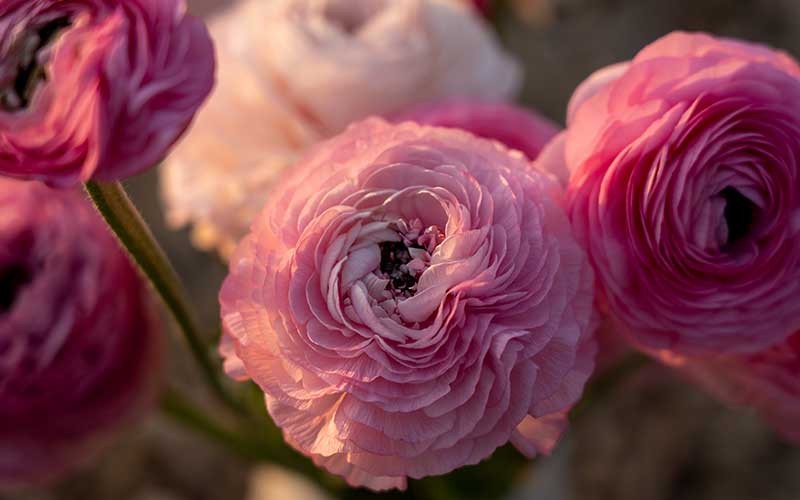
When to grow and plant ranunculus corms or tubers
When you buy fresh ranunculus at the florist, you can expect the best quality at the beginning of the season. That is because the plants were growing steadily over winter. when the days become longer (or the flower farmer turns on the lights in the evening) they come into flower. Cooler weather benefits the quality of the flower because it is a spring bloomer. When temperatures rise in the greenhouse, they stop flowering and slowly die back. Keep this information in mind when you start to grow ranunculus. Ranunculus are short-lived perennials. The plant can flower again next season. You can get corms to rebloom for a few years, usually 2 or 3 years in a row. However, success is not guaranteed! To produce big flowers the corms need to grow under perfect circumstances, just like tulip bulbs.
Now that you know ranunculus grows best in cool weather you can start planning. Depending on where you live, you can start ranunculus once or twice in a season.
Option 1: If your winter is mild and spring is warm (20+°C during the day) you can only start ranunculus in autumn. Option 2: If, like me, you live in a climate (The Netherlands zone 8a/b) with a fairly moderately cold winter and a cool spring you can start them twice during the season. Namely, in autumn and at the end of winter (late January to early February).
Option 3: If you live in a climate where the winters are very long and cold (-10 to -20 °C), I can highly recommend you to only start ranunculus corms at the end of winter. This is because Ranunculus cannot withstand severe frost.
To grow ranunculus with great success it is very important to start your corms at the right moment!
How do you start ranunculus?
The ranunculus corms you order are dried unless the seller tells you otherwise. To start your corms you soak them in water for 3-4 hours. The water will bring them back to life and they start to swell up. Don’t soak them too long or they become soft and fragile. If you are chaotic just like me, set an alarm so you don’t forget to take the ranunculus out of its water bath. The corms are ready when they are double the size.
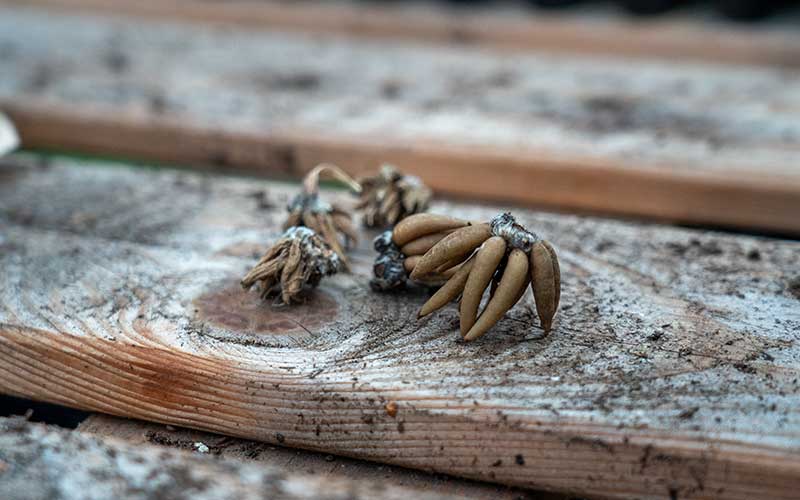
Your corms are plummed up but which way needs to go up? The corm has a crown (that hairy part in the middle) and pointy legs. The legs are planted down because new foliage grows from the crown. I usually use a 40-cell tray (4 cm cells) to start them in. Seed trays or pots with holes in the bottom are the best. It is very important that water can drain away. Too wet soil can cause your ranunculus corms to rot. Mix some perlite into your potting soil if you feel your soil is a bit heavy. later on, If plants grow fast and you are not yet ready to plant them out, you can transplant them to P9 flower pots or 15-cell trays.

After you planted the ranunculus you can store them in a cool place. Around 10 to 15°C is perfect. Light is not necessary, so a dark cellar or shed will do just fine. I store them in our greenhouse or under a cold frame. But make sure no rodents can get to your ranunculus. Rodents love to eat the corms! You can cover them with a lid to protect against rodents.
After about 2 weeks green dots emerge from the top. If you stored the corms in the dark, move them to the light. You can not grow them on a windowsill because it’s too warm there. Plants grow very fast and become thin and leggy. In the next few weeks, the corms will slowly turn into a plant. If you dig the plant up, you will see that the corms completely disappeared. Rodents are no longer interested in the corms because the is nothing to take.
Do you need a greenhouse to grow ranunculus?
I often get the question: do you need a greenhouse to grow ranunculus? The answer is no. The main reason to grow ranunculus in a greenhouse is to protect plants from heavy rain and wet soil. But there are plenty (of inexpensive) alternatives to create a similar climate. Here are a few examples:
- A transparent storage box;
- A grow rack with a transparent cover;
- The IKEA Hyllis with additional cover;
- A pop-up square meter grow tent;
- Inside a mini greenhouse;
- Or under a cold frame (easy DIY with old windows).
So a greenhouse is absolutely not necessary to grow ranunculus. don’t forget the importance of fresh air. Make sure that fresh air regularly flows into your greenhouse, through your storage box, or growing rack. A humid environment is the perfect breeding ground for fungi and other diseases.
Planting out
The best time to transplant ranunculus depends on your climate and the time of year. For example, if the winter is very mild and the spring is warm, you can transplant young plants outside in the fall. Consider regions on the coast of Spain, southern France, or Italy. As long as your winters are relatively dry, the plants will thrive without further protection.
If you live in a climate similar to the weather in the Netherlands, large parts of Germany, Belgium, the United Kingdom, and France, winters are likely to be wet and cold. In that case, you can transplant ranunculus in a tunnel or greenhouse in the fall to prevent them from breaking down. There are plenty of inexpensive alternatives to a greenhouse. As long as it keeps the rain away from the plants. Choose a spot in the garden where the soil drains well and is airy. If you start them in February, you can plant them in the garden without protection by the end of March. Ranunculus grows well in full sun or partial sun.
If your climate has a very harsh winter (zone 3-6), it is wise not to start growing until February or even March. Plant them out when the worst of the cold is over, say in April. Because of the cold weather, the ranunculus will probably have to grow in seed trays or pots for a while. You may need to pot them up to larger pots in between.
Cover ranunculus with horticultural fleece when frost is expected. If the soil is poor I can highly recommend adding potting soil or compost. I grow ranunculus on no dig beds and add 2 cm of compost every year. After transplanting I water the plants once with liquid seaweed fertilizer. I do the same when the buds are forming to give an extra boost. Because our soil is heavy I also add perlite. I noticed ranunculi grow better when the soil is airy.
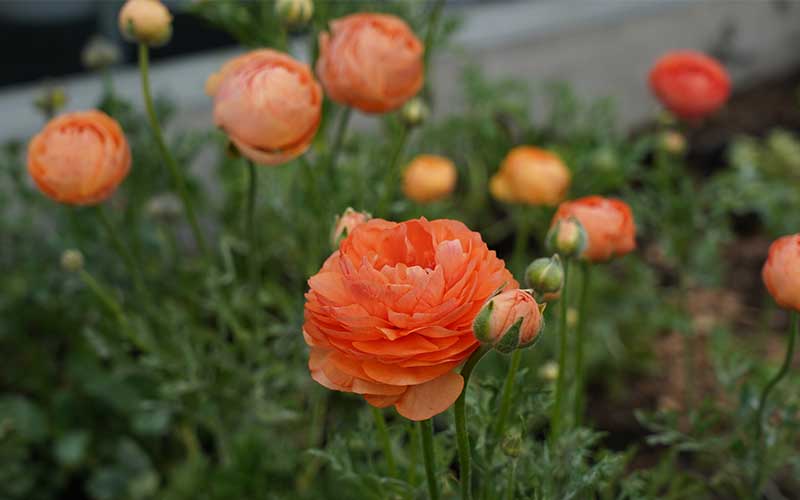
Protecting ranunculus against common pests
Growing ranunculus can take some effort. After you put so much effort into growing them you don’t want to lose plants to animals and pests. Therefore I will tell you what protection you might need. Luckily there is an easy solution for all of them so you don’t need to worry.
Aphids
The most common pest is aphids. Usually, the aphids start to live on your plants before or after the ladybugs are active. The ladybugs and their larvae live off aphids. In those first (or last) few weeks in spring and autumn you need to keep a close eye on your plants. The aphids suck water and nutrients from the youngest parts of the plants. If untreated they can kill ranunculus.
If the plants just started flowers and you pick the flowers you will notice the vase life is shorter. Aphids can start to affect other indoor plants or other flowers in your vase. You can easily treat aphids with ladybug larvae or a natural repellant. The larvae are most active around 15°C. In early spring is late autumn you can not use larvae so I would recommend the repellant. Aphids reproduce fast and are also known to spread diseases.
Wild Animals
Another common animal that you should be aware of is rabbits. Especially during cold weather spells the fresh leaves are a treat to them. The fleece cover helps to protect but it is never 100% secure. If you live in a rural area don’t forget to protect your plants against rabbits.
Unfortunately, deer also enjoy ranunculus. Just like the rabbit, the deer are looking for fresh foliage to eat during the cold winter months. Luckily a cover works very well to protect against deer. The cover can be either fleece fabric or clear polytunnel plastic. If you grow ranunculus in a greenhouse or polytunnel make sure they can’t enter!
Free ranunculus e-mail course
Because everything is easier when you can do it together we offer a free online e-mail course or ranunculus grow-along. You can sign up any time of the year but we start in February and October. You can follow it in English and Dutch. I share with you my entire growing process from beginning to end. Every few weeks you receive a new e-mail with step to step details and tips. Sign up for free via this link!
If you would like to grow the same cut flower variety ranunculus as me you can find them on our website. We offer fresh corms from September/October until the beginning of February. If the corms are out of stock you can sign up to get a stock notification via e-mail.
If you have any questions or would like to share your results don’t hesitate to contact me on Instagram (@thefarmflowers) or e-mail me (flowers@thefarmdream.com). You can also leave a comment on this blog post. I’m looking forward to your pictures!
Nicole
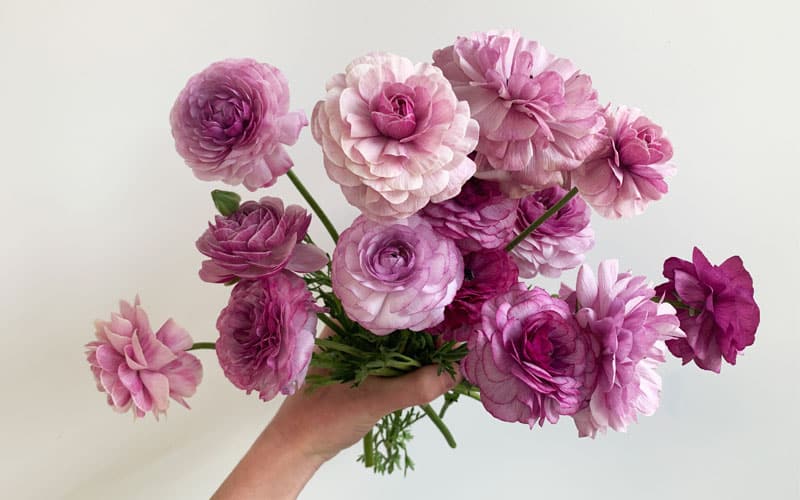
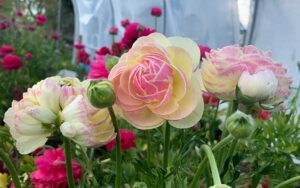
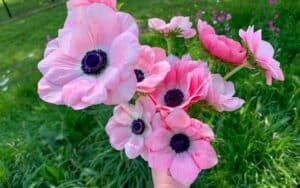
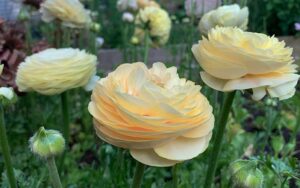
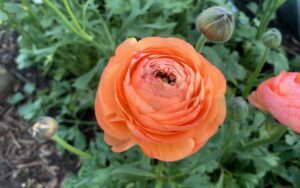
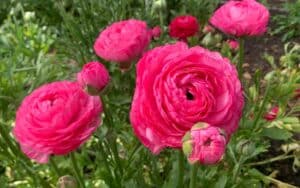
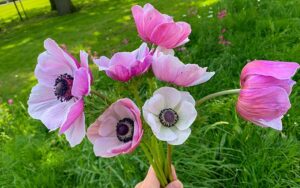
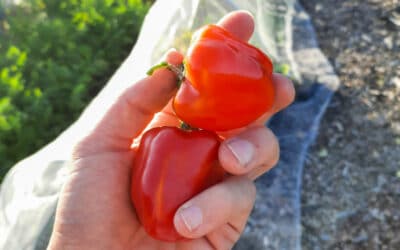



0 Comments